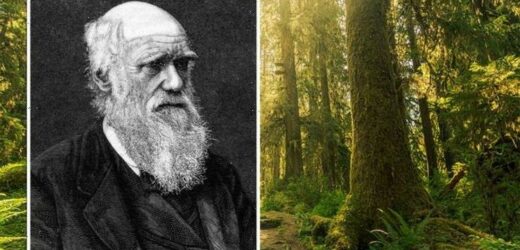Charles Darwin: Scientist explains origin of life theory
We use your sign-up to provide content in ways you’ve consented to and to improve our understanding of you. This may include adverts from us and 3rd parties based on our understanding. You can unsubscribe at any time. More info
Man-made climate change has emerged in recent years as the single biggest threat to human life on Earth. Driven by the runaway greenhouse effect, the unchecked burning of fossil fuels has polluted the skies with carbon dioxide (CO2) and pushed the polar caps to melt at alarming rates. As evidenced by this month’s COP26 climate summit in Glasgow, scientists and world leaders are now scrambling to undo the damage and prevent global ecosystems from collapsing.
Towards this goal, governments are committing vast sums of money to slash greenhouse emissions and transform our energy grids to make use of renewable sources of power like wind and solar.
But there might be another solution to help tackle the problem – one that was penned nearly two centuries ago by one of Britain’s most revered scientists.
According to researchers at the University of Birmingham, Charles Darwin may have unlocked the secret to growing stronger, more resilient forests, which could aid the effort to curb global levels of CO2.
Best known for his 1859 magnum opus, On the Origin of the Species, the Victorian biologist’s work has been revolutionary for understanding evolution and our past as a species.


But in an article penned for The Conversation, Professor Rob MacKenzie and Professor Christine Foyer, argued his work could be equally as important when applied to the present and future.
They wrote: “It has taken a century and a half – ironically about as long as it can take to grow an oak to harvest – and a climate crisis to make policymakers and landowners take Darwin’s idea seriously and apply it to trees.”
The experts argued that there is no technology that can presently compete with a tree’s ability to pull carbon from the atmosphere.
Plants absorb carbon during the photosynthesis process, which creates energy and oxygen as a byproduct.
According to Darwin’s observations, trees that grow in forests rich in diverse foliage and plants tend to grow much more strongly than trees that are planted individually.
COP26: Boris outlines deal with Gates for 'low carbon aviation'
The discovery could be a key way for governments to mitigate the worst of climate change, by allowing stronger forests to draw more carbon from the air.
The Birmingham researchers wrote: “Tree planting can cause ecological damage when carried out poorly, particularly if there is no commitment to diversity of planting.
“Following Darwin’s thinking, there is growing awareness that the best, healthiest forests are ones with the greatest variety of trees – and trees of various ages.”
Research has shown that forests following this model, can grow between two to four times as strong, thus “maximising carbon capture”.


This happens because the different species of trees draw their nutrition from different sources, which can lead to higher yields.
The forests are also more resilient to disease outbreaks, the effects of climate change and destructive, extreme weather events.
The so-called Darwin effect was described in 1859 in On the Origin of the Species, in the fourth chapter of the book.
Now, the Birmingham researchers claimed scientists and policymakers from across the globe are looking at the possibility of applying these observations to new tree-planting initiatives.
One such meeting discussed a study at the Norbury Park estate in England.
Using the Darwin effect and a host of other measures, the estate is capturing more than 5,000 tonnes of CO2 in the UK.
According to the researchers, it is “quite possibly the most carbon-negative land in the UK”.
They added: “It has been said that it is impossible to plant a forest, but it should certainly be possible to design a plantation that will blossom into a forest for future generations.
“We need forests to be a practical, dependable, and just response to our climate and biodiversity crises, and Darwin has shown us the way.”
Source: Read Full Article


